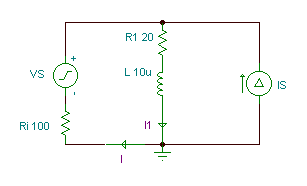Thevenin's Theorem states that it is possible to simplify any linear
circuit, no matter how complex, to an equivalent circuit with just a
single voltage source and series resistance connected to a load. The
qualification of “linear” is identical to that found in the
Superposition Theorem, where all the underlying equations must be linear
(no exponents or roots). If we're dealing with passive components (such
as resistors, and later, inductors and capacitors), this is true.
However, there are some components (especially certain gas-discharge and
semiconductor components) which are nonlinear: that is, their
opposition to current changes with voltage and/or current. As such, we would call circuits containing these types of components, nonlinear circuits.
Thevenin's Theorem is especially useful in analyzing power systems and other circuits where one particular resistor in the circuit (called the “load” resistor) is subject to change, and re-calculation of the circuit is necessary with each trial value of load resistance, to determine voltage across it and current through it.
We can calculate the Thévenin equivalent circuit in two steps:
1.
Calculate ZTh. Set
all sources to zero (replace voltage sources by short circuits and current
sources by open circuits) and then find the total impedance between the two
terminals.
2.
Calculate VTh. Find
the open circuit voltage between the terminals. Example
Find
the Thévenin equivalent of the network for the points A and B at a frequency:
f = 1 kHz, vS(t)
= 10 cosw×t
V.
The
first step is to find the open circuit voltage between points A and B:
The
open circuit voltage using voltage
division:
The
second step is to replace the voltage source by a short circuit and to find the
impedance between points A and B:
Here is the Thévenin equivalent
circuit, valid only at a frequency of 1kHz. We must first, however, solve for
CT's capacitance. Using the relationship 1/wCT
= 304 ohm, we find CT = 0.524 uF
Now
we have the solution: RT = 301 ohm and CT = 0.524 m
F:




